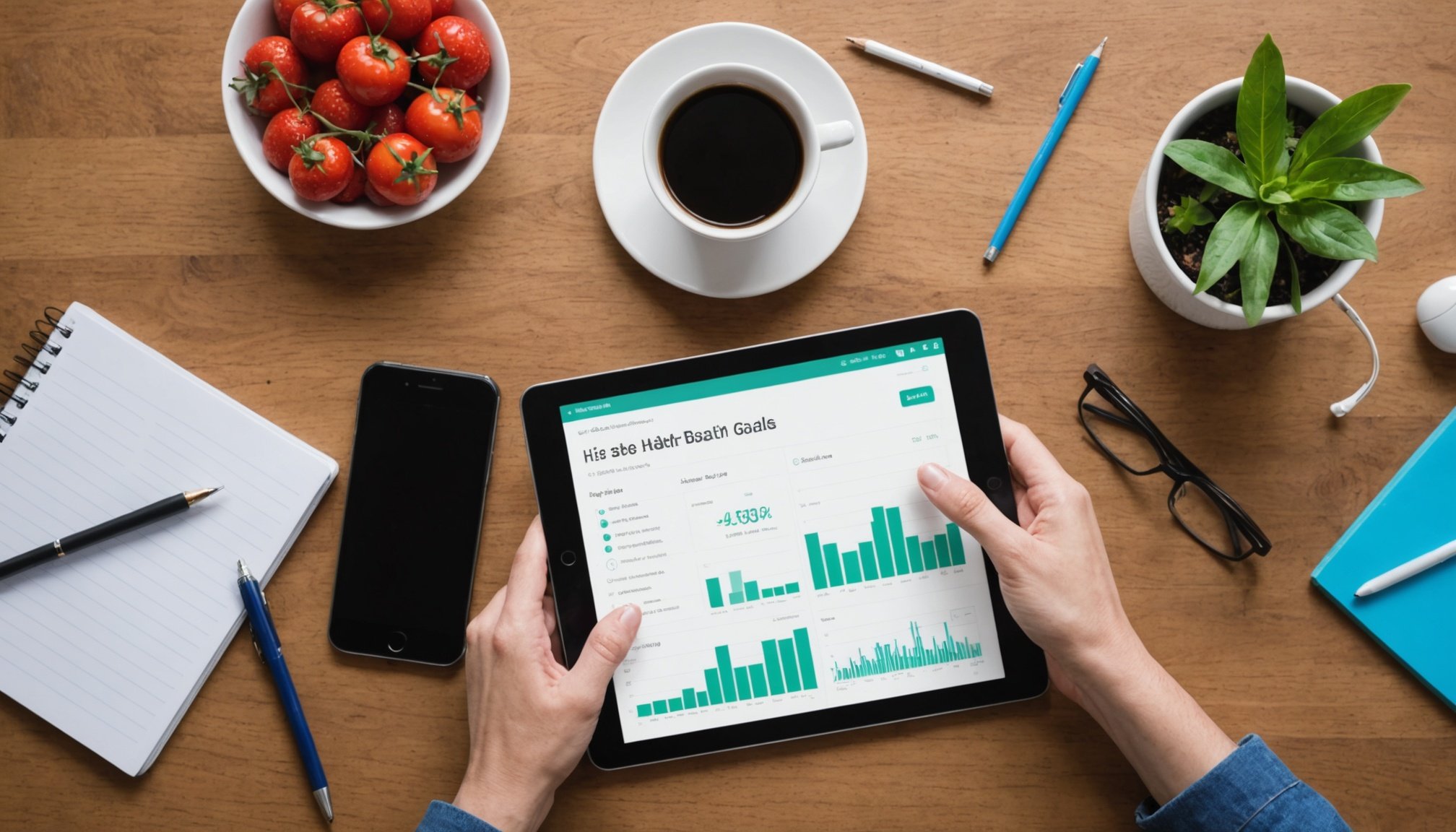In an era where technology is intricately woven into the fabric of our daily lives, tracking health goals has become more accessible than ever. However, this ease can also lead to an inundation of data, leaving many feeling overwhelmed. Data is vital for understanding and improving your overall health, but the key lies in managing and interpreting it to derive tangible insights without feeling swamped. In this article, we’ll explore how you can effectively utilize technology to track your health goals while maintaining a balanced approach to data management.
The Role of Technology in Personal Health Tracking
With the advent of smartphones, wearables, and mobile apps, technology has reshaped how we approach our healthcare and fitness goals. Devices like smartwatches and fitness trackers provide real-time updates on various health metrics, such as heart rate, sleep patterns, and physical activity. When integrated with platforms like Google Analytics, these technologies offer a detailed perspective of your health journey.
This might interest you : What steps can you take to manage anxiety in social situations effectively?
By leveraging these tools, you can set personalized goals and receive feedback that helps to keep you motivated. However, it’s essential to select devices that align with your goals and provide meaningful insights. For instance, if your primary focus is on enhancing cardiovascular fitness, a device that tracks heart rate and activity levels would be beneficial.
Healthcare professionals are also embracing technology for patient management. Through telehealth and remote monitoring, they can track patients’ data remotely, ensuring consistent care and timely interventions. This approach enables a more proactive care model, shifting from reactive treatments to preventive care.
Also to read : How can you recognize and address the signs of burnout in your professional life?
Nonetheless, the sheer volume of available data can be daunting. To navigate this, you should prioritize which metrics are most relevant to your objectives and focus on those. Additionally, setting realistic milestones allows for manageable progress tracking, preventing information overload.
Streamlining Your Data Management
Tracking your health often involves handling large volumes of data, which can quickly become overwhelming. To prevent this, it’s vital to streamline your data management practices effectively. Consider using a centralized platform that consolidates information from multiple sources. This integration simplifies your data landscape, making it easier to interpret and act upon.
Adopting a minimalist approach to tracking can also reduce data clutter. While it’s tempting to monitor every available metric, focusing on a select few that directly impact your health goals ensures clarity and prevents unnecessary stress. Identify the key indicators that align with your objectives and prioritize those.
Technology can also assist in optimizing your time spent on tracking. Automated reports and visual dashboards offer a quick snapshot of your progress, requiring less manual effort. These tools help you understand trends and patterns without sifting through endless data points.
Moreover, consider setting aside specific times each week to review your data. This scheduled approach encourages consistency and ensures you remain focused on actionable insights rather than getting bogged down by excessive details. By maintaining a structured routine, you can effectively manage your health data without feeling overwhelmed.
Balancing Technology with Human Intuition
Incorporating technology into your health routine doesn’t mean abandoning human intuition. On the contrary, it’s about finding a balance between the two. While technology provides valuable insights, your understanding of your body and health is just as important.
Listening to your body’s cues and integrating them with technological data creates a more comprehensive picture of your well-being. For instance, if your tracker indicates a high-stress level, consider cross-referencing this with how you feel emotionally and physically. This holistic approach helps you make informed decisions and adjustments to your health regimen.
Patient care also benefits significantly when technology is used alongside professional medical advice. While data from wearables and apps can offer valuable insights, consulting with healthcare professionals ensures that the information is interpreted correctly and aligned with your medical history and needs.
Additionally, consider the social aspect of health tech. Engaging with communities that share similar goals can offer motivation and support beyond what technology alone can provide. Whether through online forums or local activity groups, human interaction can enhance your fitness journey, providing encouragement and accountability.
Setting Realistic Health Goals
When setting health goals, it’s crucial to ensure they are realistic and achievable. While technology can help you monitor progress, it’s your responsibility to establish objectives that are both meaningful and attainable.
Begin by defining what success looks like for you. Whether it’s improving fitness levels, losing weight, or managing a chronic condition, clarity in your goals will guide your tracking efforts. Use technology to break down these goals into smaller, manageable steps, and celebrate milestones along the way.
Avoid the trap of comparison. With access to an abundance of data and analytics, it’s easy to compare your progress with others. Remember that each individual’s health journey is unique, and your goals should reflect your personal circumstances and capabilities.
Engage in regular self-assessment. Reflecting on your progress and adjusting your goals as needed ensures they remain aligned with your evolving needs and lifestyle. Technology can assist in this process, offering insights that inform your decisions. This adaptability is key to maintaining motivation and achieving long-term success.
Technology holds immense potential for enhancing how we track and manage our health. By effectively utilizing tech tools, you can gain valuable insights into your well-being and make informed decisions that align with your health objectives. However, it’s essential to balance data with intuition and maintain a streamlined approach to prevent overwhelm.
By setting realistic goals, prioritizing relevant data, and leveraging both technology and human support, you can navigate the complexities of health tracking with confidence. Embrace technology as a valuable ally in your pursuit of optimal health, but remember that it’s ultimately your understanding of yourself that drives true progress.











